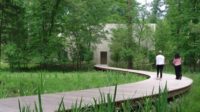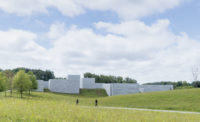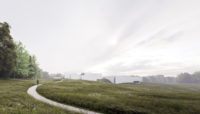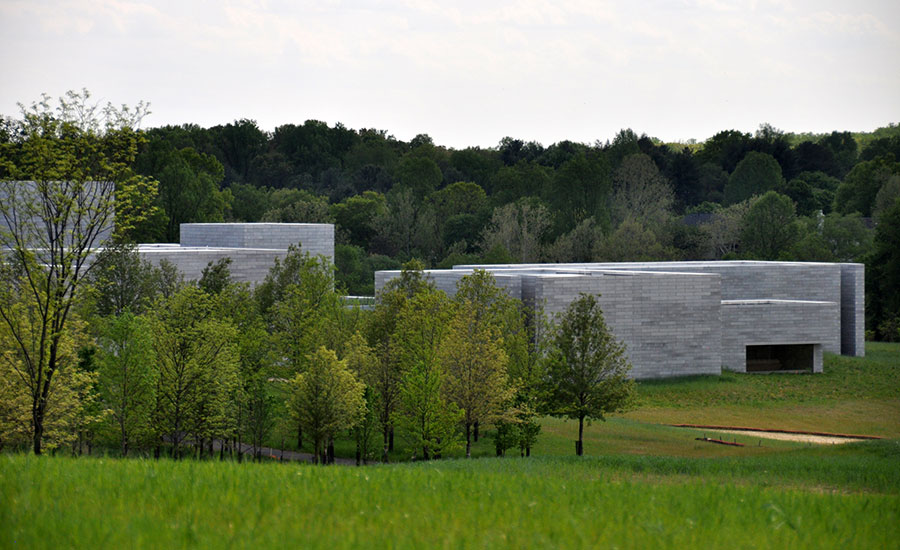Sneak Peek of Thomas Phifer’s Glenstone Expansion

The Pavilions at Glenstone, by Thomas Phifer and Partners
Photo by Deane Madsen, © Architectural Record

The Pavilions at Glenstone, by Thomas Phifer and Partners
Photo by Deane Madsen, © Architectural Record

The Pavilions at Glenstone, by Thomas Phifer and Partners
Photo by Deane Madsen, © Architectural Record

Glenstone Museum, by Gwathmey Siegel & Associates
Photo by Deane Madsen, © Architectural Record

Louise Bourgeios's "Cells" series includes intimate rooms constructed of found objects.
Photo by Deane Madsen, © Architectural Record

Louise Bourgeois. Cell (Choisy), 1990-1993. © The Easton Foundation/Licensed by VAGA, New York. Collection: Glenstone Museum.
Photo by Deane Madsen, © Architectural Record

Louise Bourgeois. The Destruction of the Father, 1974. © The Easton Foundation/Licensed by VAGA, New York. Collection: Glenstone Museum.
Photo by Deane Madsen, © Architectural Record

A selection of mixed media works hangs in galleries of Glenstone's original Gwathmey Siegel building.
Photo by Deane Madsen, © Architectural Record

Richard Serra. Sylvester, 2001. © 2013 Richard Serra / Artists Rights Society (ARS), New York. Collection: Glenstone Museum.
Photo by Deane Madsen, © Architectural Record

Andy Goldsworthy. Clay Houses (Boulder), 2007. © Andy Goldsworthy. Collection: Glenstone Museum.
Photo by Deane Madsen, © Architectural Record

Tony Smith. Smug, 1973/2005. © The Estate of Tony Smith/Artists Rights Society (ARS), New York. Collection: Glenstone Museum.
Photo by Deane Madsen, © Architectural Record











The Glenstone Museum in Potomac, Md., was abuzz with activity during a recent press preview for its latest exhibition, “Louise Bourgeois: To Unravel a Torment,” which opened May 10, not least because visitors were also offered a brief walkthrough of the museum’s significant expansion, which is set to open October 4.
Glenstone may be one of the greater Washington area’s best-kept secrets, but expect that to change this fall. The museum opened the doors of its original 30,000-square-foot museum, designed by Gwathmey Siegel & Associates, in 2006. Since then, Glenstone has grown its undulating landscape, swelling from 100 acres to 230 acres and becoming a pastoral backdrop for large-scale outdoor sculptures from artists that include Richard Serra, Ellsworth Kelly, Jeff Koons, and Janet Cardiff with George Bures Miller.
The museum has also outgrown the 9,000 square feet of gallery space of its Gwathmey Siegel–designed facilities, prompting a dramatic expansion at the hands of Thomas Phifer and Partners with PWP Landscape Architecture, which adds 50,000 square feet of gallery space—along with an arrival center, two cafés, and storage and administrative spaces that bring the total addition to 240,000 square feet—in a cluster of variable-sized concrete boxes dubbed “the Pavilions.”
Nestled into Glenstone’s landscape, these pavilions—eight of which are planned as single artist galleries—surround an open-air, 18,000-square-foot water court. Visitors will meander through the landscape, past Koon’s Split-Rocker (2000), standing sentry at the entrance, to a new arrival center, then across a bridge and through a stand of multispecies trees to the museum itself, which appears as an almost sculptural accumulation beyond; Phifer has called the expansion “a village of buildings.” Concrete blocks measuring 1-by-1-by-6 feet interlock to form the interior and exterior walls of each pavilion, while vertical glazing lines the circulation path looking into the central water court. Speaking with RECORD editor in chief Cathleen McGuigan last summer, Phifer said, “We wanted to create an atmosphere where you kind of leave the world behind.”
Until October, visitors can immerse themselves in the landscape and outdoor sculpture within it, and content themselves with the new Bourgeois exhibition, which also features architectural elements: Several of her “Cells”—mixed-media assemblages that form intimate rooms—are on display, as are many of her skyscraper-inspired totems and prints in a collection that spans six decades of her career. Glenstone co-founder and director Emily Wei Rales described these rooms as self-portraits and embodiments of mood; one, Cell (Choisy) (1990-1993), is a paneled cage surrounding a flesh-colored marble house, outfitted with a guillotine.















